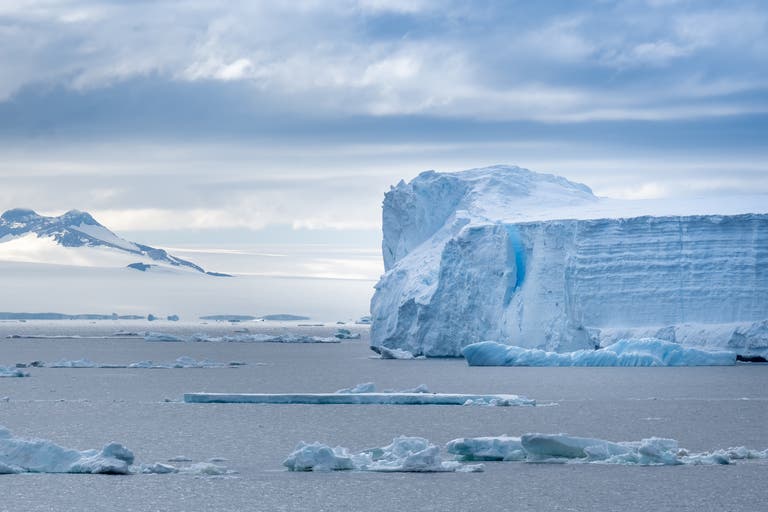The Ross Ice Shelf, a vast expanse of floating ice the size of France, has long been considered a stabilizing force for Antarctica’s coastal glaciers. However, recent studies suggest that this behemoth of ice may be more vulnerable to the impacts of climate change than previously thought, posing a significant risk to global sea levels.
One of the critical roles of the Ross Ice Shelf is to buttress numerous major glaciers, slowing their flow into the ocean and thereby regulating sea level rise. However, new research indicates that the stability of this ice shelf is not as secure as once believed. A rapid shift in ocean currents, driven by warming temperatures, could destabilize the Ross Ice Shelf, leading to accelerated ice loss from Antarctica.
The Antarctic Peninsula, where the Ross Ice Shelf is located, has been experiencing some of the most rapid warming on the planet. Rising ocean temperatures are eroding the ice shelf from below, weakening its structural integrity. Additionally, changes in wind patterns and ocean circulation are altering the distribution of warm waters around Antarctica, further exacerbating the situation.
Scientists have observed alarming changes in the flow of ice from the glaciers supported by the Ross Ice Shelf. Accelerated melting and thinning of the ice indicate that the stability of the entire region is under threat. If the Ross Ice Shelf were to collapse or significantly retreat, it could unleash a chain reaction of ice loss from the glaciers it supports, leading to a rapid increase in global sea levels.
The implications of such a scenario are profound. Coastal communities around the world would be at risk of inundation, and the ecological balance of marine ecosystems could be disrupted. Furthermore, the loss of ice from Antarctica would contribute significantly to the overall rise in global sea levels, with far-reaching consequences for human society and the environment.
Addressing the threat to the Ross Ice Shelf requires urgent and concerted action to mitigate climate change. Reducing greenhouse gas emissions and transitioning to renewable energy sources are essential steps to limit further warming of the planet and protect vulnerable ice shelves like the one in Antarctica.
In addition to mitigation efforts, it is crucial to enhance monitoring and research efforts in Antarctica to better understand the dynamics of ice shelves and glaciers. Improved predictive models can help anticipate future changes and inform adaptation strategies for coastal communities at risk.
The vulnerability of the Ross Ice Shelf serves as a stark reminder of the urgent need to address climate change. The fate of this massive ice structure is not only a concern for Antarctica but for the entire planet. It is a call to action for governments, businesses, and individuals to take decisive steps towards a sustainable and resilient future. Only through collective efforts can we hope to safeguard the stability of our planet’s ice sheets and mitigate the impacts of climate change on a global scale.







Leave a Comment